
Nepal is home to thousands of temples. These temples hold both cultural and historical significance in the country and are visited by pilgrims from both Nepal and India.
The temples in Nepal are energy centres that have a blend of art and culture that take back thousands of years. Apart from their unique designs, these temples are famous for their religious significance.
Many of the temples in Nepal are dedicated to Hindu gods and goddesses, including Shiva, Vishnu, and Kali while others are dedicated to different forms of Buddha.
Most of the temples in Nepal are important centres of meditation and spiritual practice. Here are a few of them:
1. Taleju Bhawani
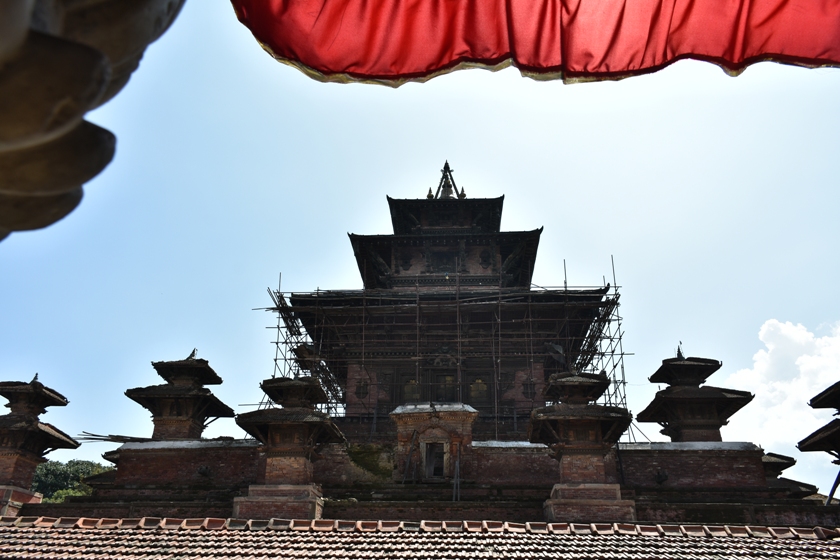
The Taleju temple stands out amongst all the temples in Kathmandu. Built in the 16th century by Mahendra Malla, the temple is home to Taleju Bhawani who was the royal goddess of the Malla kings back in the day. The temple is grand too as it stands on a 12-stage plinth and is also surrounded by 12 miniature versions of it. There was a time no building was bigger than this temple, which is still revered as one of the most powerful goddesses in the valley by locals. The temple is only open to the public once a year, during the ninth day of Dashain.
2. Pashupatinath

Pashupatinath temple in Kathmandu is one of the most historic and popular temples in Nepal as millions of Hindu pilgrims come to visit the temple every year. The exact date the temple located on the banks of the Bagmati river was built is not clear, but many believe the current form was built in the late 17th century.
The temple alone is not the only attraction in the area as it is home to hundreds of shrines, inscriptions and ashrams set up some centuries ago, including the 11th-century Guhyeshwari temple. The evening arati on the banks of the river is something everyone can enjoy. People can also see the circle of life end at the eastern ghat where bodies are cremated. While the area is open to all, the temple is only open to Hindu pilgrims. This is also a UNESCO World Heritage site.
3. Bouddanath
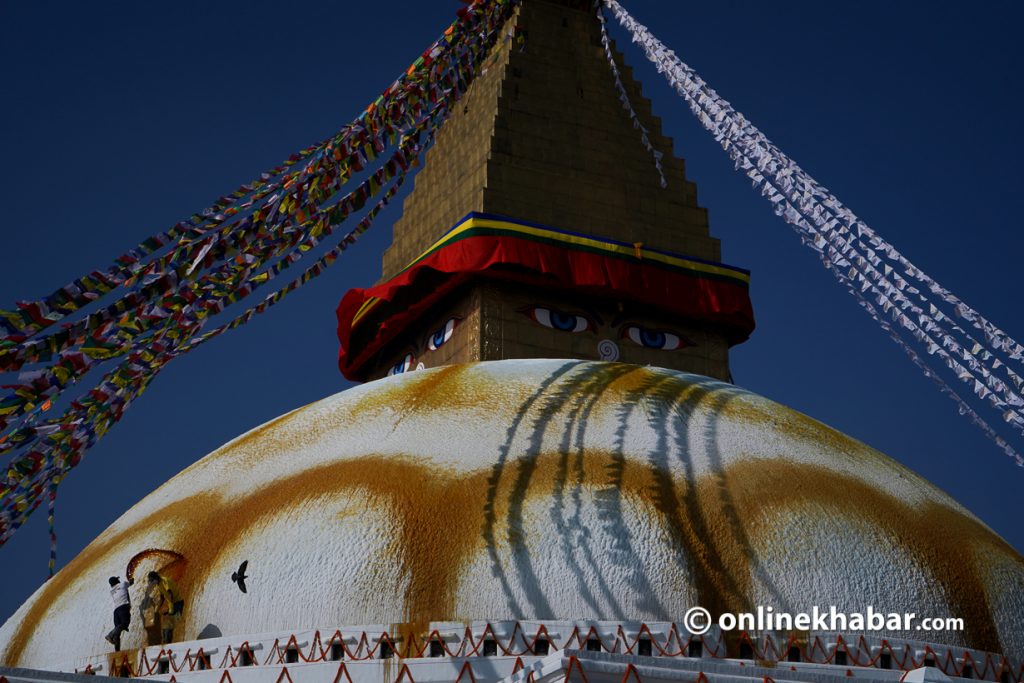
Built in the 6th century, the Bouddanath stupa is one of the most iconic monuments and temples in Nepal as it is a symbol of religious harmony and peace. The structure is a reminder for people about Buddha’s path towards enlightenment. Historians say the monument is three-dimensional as the plinth represents earth, the dome represents water and the tower represents fire. There is also a belief that the 13 levels of the spire represent the stages that a person needs to pass to achieve nirvana.
The UNESCO World Heritage site is always full of people circumambulating and chanting prayers. It is a place that will make you feel at peace and a place where you get to feel the presence of the Buddha. With cafes and restaurants all over the stupa, it also makes a great place for breakfasts and dinners.
4. Swayambhunath
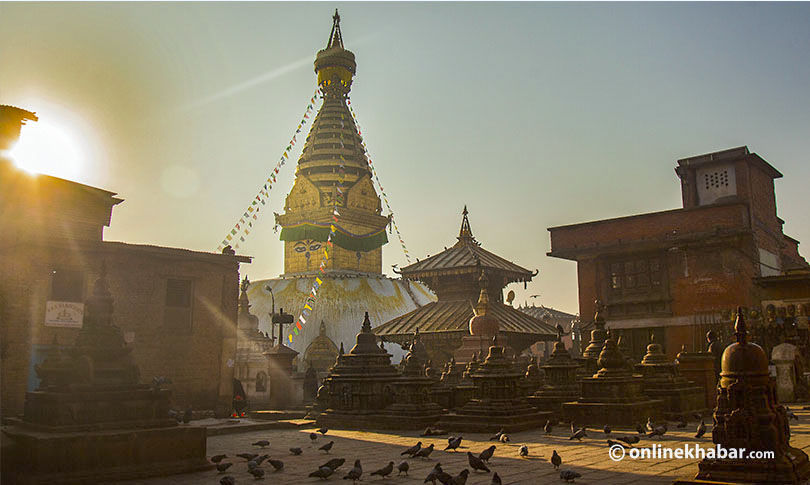
Like the Bouddhanath stupa, the Swayambhunath stupa is another iconic Buddhist shrine in Kathmandu that shows the influence Buddhism had in the valley over 2000 years ago. One of the oldest temples in Nepal, Swayambhunath is set on top of a hill and is often called the Monkey Temple by tourists thanks to the population of rhesus monkeys on the hill. The place, like Bouddhanath, is full of people throughout the day as people often visit the temple to look over the city in the evening as you get a great panoramic view of Kathmandu.
If interested, you can hike up the hill by taking the 365 steps from the eastern side of the stupa and get to the top of the hill to the stupa and seek blessing from the five main shrines. Like Bouddhanath, Swyambhunath is also a UNESCO World Heritage site.
5. Changunarayan
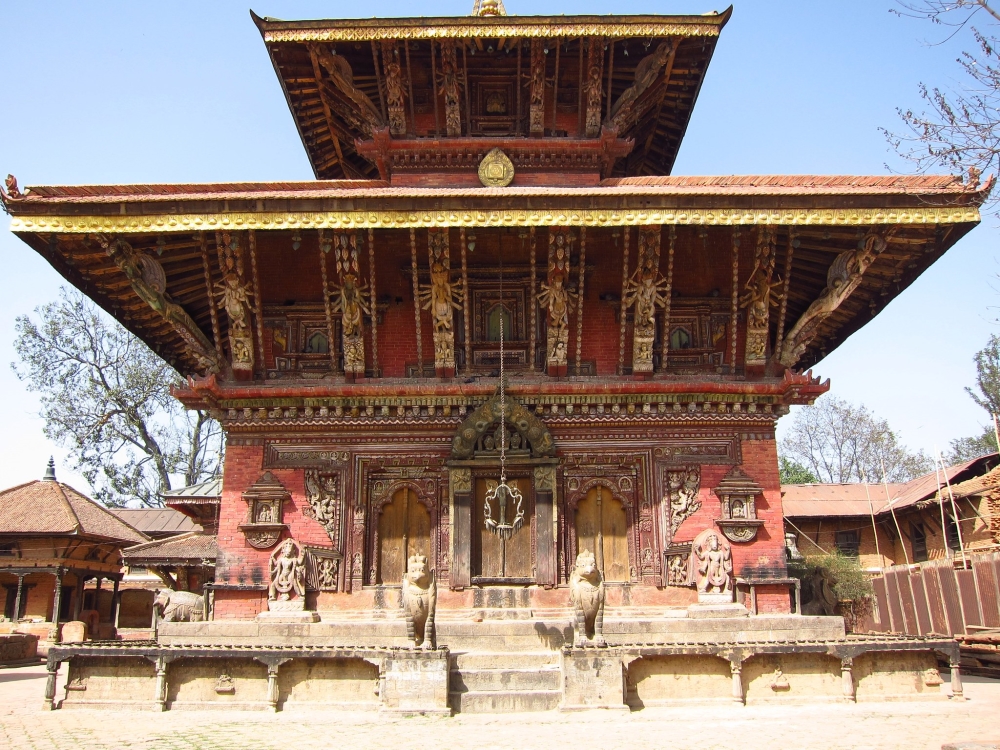
Changunarayan is one of the oldest temples in Nepal as it is one of the few Lichhavi-era temples still standing. The temple is dedicated to Lord Vishnu and is one of four Vishnu temples that watch over the valley. Like Swayambhunath, the temple is perched up on a hill and overlooks the city of Bhaktapur. Changunarayan is surrounded by a champak tree forest and a small village known as Changu. There is a belief that a Kashmiri king married off his daughter, Champak, to the prince of Bhaktapur. The temple is considered to be named after her. This is also a UNESCO World Heritage site.
6. Dakshinkali

One of the most famous temples in Nepal, Dakshinkali is dedicated to the goddess Kali. It is believed Dakshinakali is the most popular form of Kali as she protects her devotees and children from mishaps and misfortunes. Many devotees visit Dakshinkali during Dashain, a festival that celebrates all nine forms of Durga and offers sacrifices like chickens and goats. People also visit the temple after they buy a new vehicle.
7. Muktinath
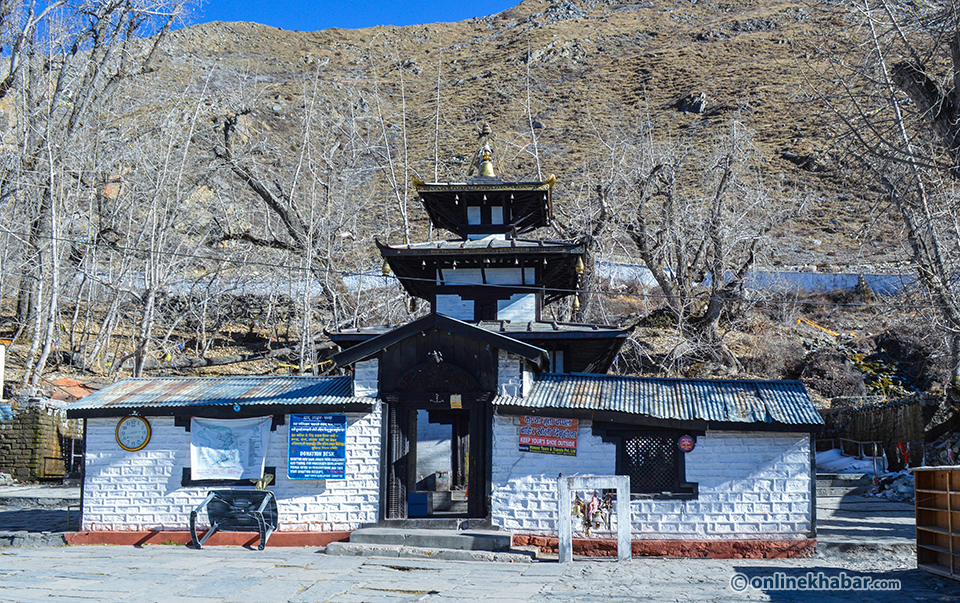
Up in the lap of the mountains lies Muktinath, one of the few temples in Nepal that both Hindus and Buddhists believe liberates a person from the cycle of birth and death. Located at an altitude of 3,710 metres in Mustang, the temple is dedicated to Vishnu. Apart from that, the temple is also home to 108 water sprouts that represent the 108 heads of lord Shiva. Near the temple is Jwalamai temple which has a perpetual flame burning from natural gas.
8. Manakamana
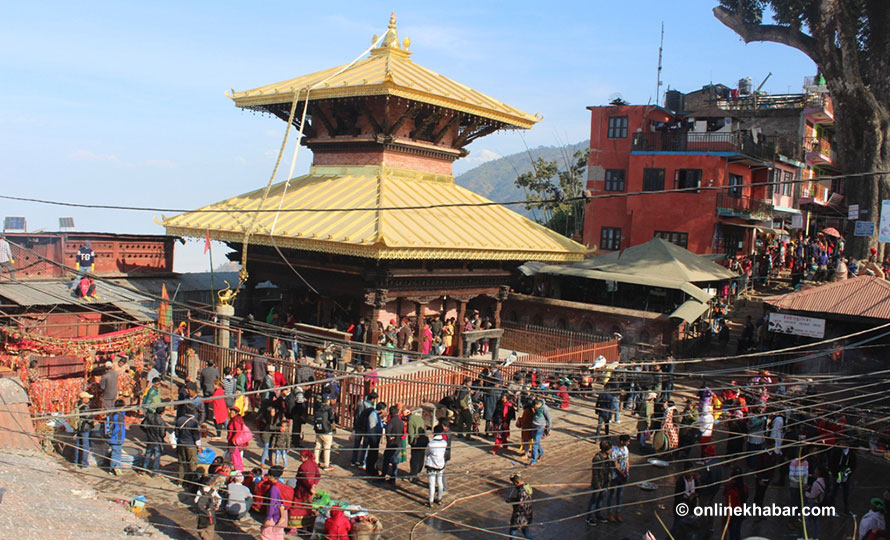
Manakama temple in Gorkha is another on the list of important temples in Nepal. Dedicated to Bhagawati, there is a belief among Hindus that she will fulfil the desire of devotees if they visit her with a pure heart and mind. The temple is located on a picturesque hill that can be reached both by hiking and on a cable car. The temple is roughly four hours from Kathmandu.
9. Halesi Mahadev
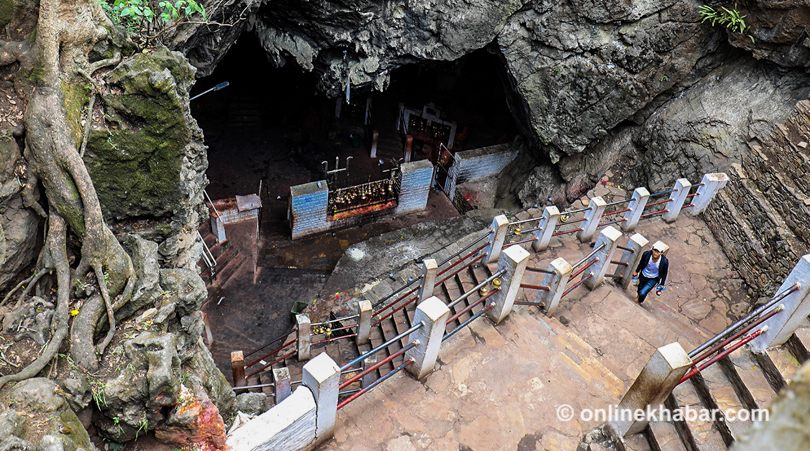
Halesi Mahadev is considered the Pashupatinath of eastern Nepal, and this title tells it is one of the most important temples in Nepal. The temple lies inside a beautiful and mysterious natural cave on the top of a small hill, through which two rivers–Dudhkoshi and Sunkoshi–flow. Apart from being an important temple in Nepal, it is also a touristic place as it has over 100 caves and caverns, some of which are interconnected. There is a belief these caves were used for meditations by sages centuries ago.
10. Pathibhara
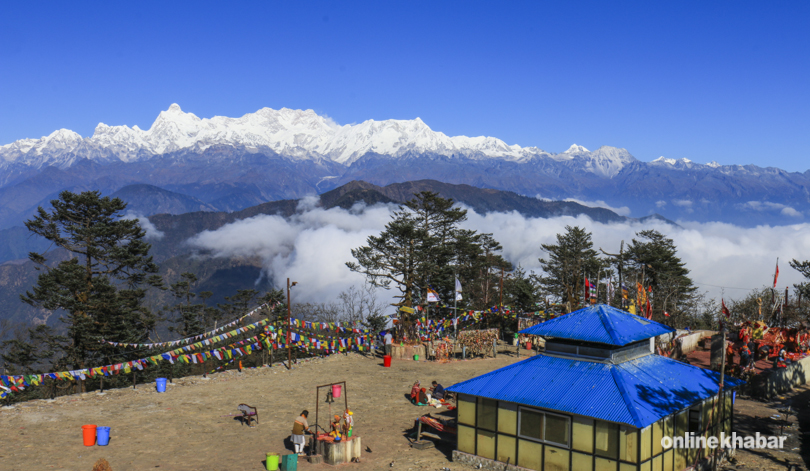
Pathibhara is another temple in Nepal that is both a pilgrimage and a touristic haven. The panoramic view of the Himalayas is quite amazing from the temple. But people do not go there for the view. There is a belief that like Manakamana, Pathibhara Devi also grants the wishes of people who come to her with a pure heart. The journey to Pathibhara is not easy so it is recommended people take a helicopter ride to the top.
11. Kalinchok
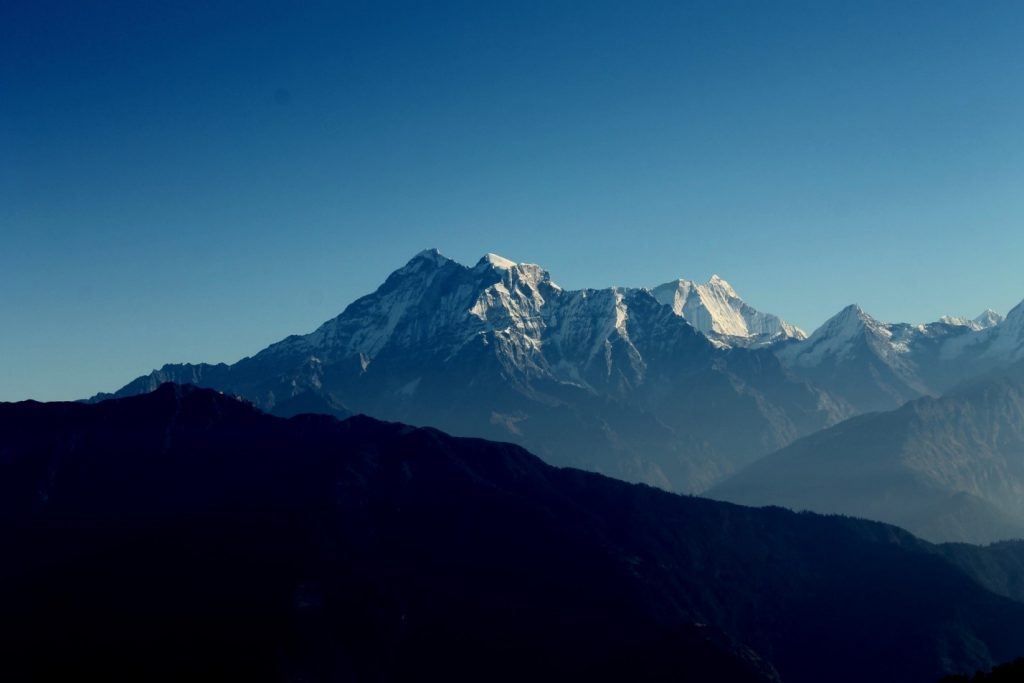
Kalinchok temple is quite similar to Pathibhara and it holds the same importance but the place is quite different. Kalinchok is also perched on a hill and is home to a reincarnation of Kali. It offers pilgrims a mix of spirituality, natural beauty and adventure. While there is an option to hike up to the temple, a cable car service has made things easier for everyone. While going to Kalinchok, make sure you stay at Kuri which becomes a skier’s paradise when it snows.
Because it is quite close to Kathmandu despite being in the mountains, Kalinchok is one of the most visited temples in Nepal of late.
12. Janaki Mandir

Janaki Mandir is one of the most important temples in Nepal’s southern plains. The temple is dedicated to King Janak’s daughter Sita, who was Ram’s wife. The temple has its own history in Hindu holy books, but the architecture of the temple is amazing as it has a blend of both Mughal and Rajput styles. The temple is worth a visit during special occasions like Ram Nawami and Vivah Panchami when the entire place is decorated with lights and flowers and special events are held every day.
13. Parashuram Dham
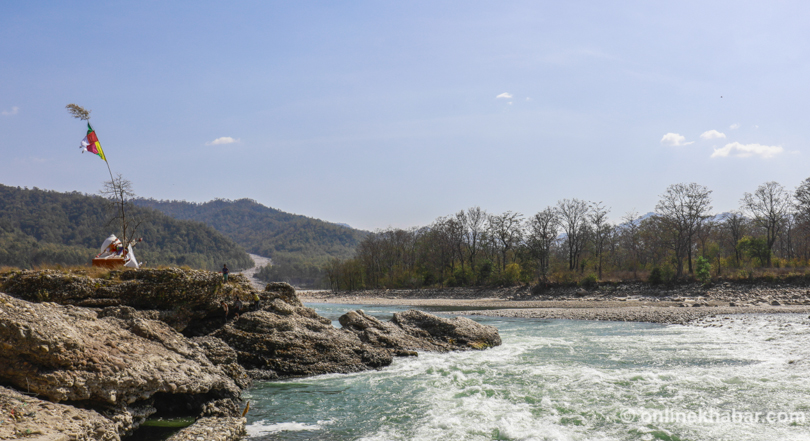
Parashuram Dham is located on the bank of the Mahakali in the Dadeldhura district of far-west Nepal. It is one of the most important temples in Nepal’s western frontier. It is home to the sixth incarnation of Vishnu. Parashuram Dham is worth a visit during Maghe Sankranti (winter solstice) every year as a big fair is held with pilgrims from all over Nepal coming to the place. The place is also the place where the Rangun from the Mahabharat range, the Shyama from Manasarovar, the Sarayu and the Mahakali rivers meet.
14. Mayadevi Temple

Mayadevi Temple in Lumbini is a Buddhist temple which is built to commemorate the place Gautam Buddha was born two millennia ago. The temple is next to a sacred pool and garden which was visited by Mayadevi, Buddha’s mother, before giving birth. The place is a UNESCO World Heritage site and covers around 50 acres and has several monasteries and temples.
This is one of the most-visited temples in Nepal.


















